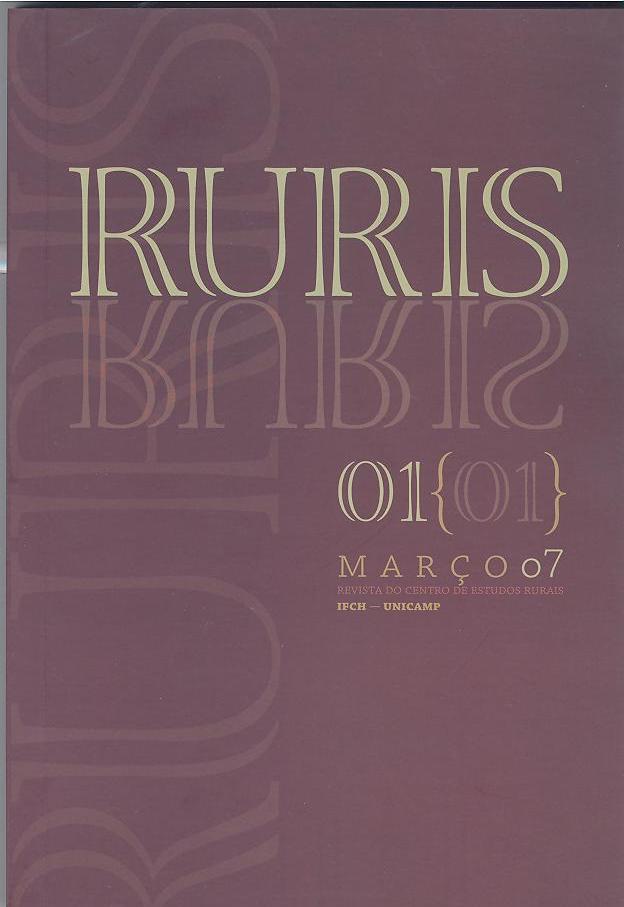Abstract
The project for the construction of a mega-dam, in an extremely dry area of Southern Portugal had its beginnings in the 50s, under the Salazar regime. It was only after decades of advances and delays that its construction finally took place. The huge lake flooded an area which included the Village of Luz, that therefore had to be entirely moved into another location. The closing of the flood-gates took place in february 2002; that year the population was transferred, and in 2003 the old Luz was completely demolished. Nowadays, one goes by boat over the site where the old village once existed. This text provides the general context in which the Alqueva project was developed and a general description of the social climate surrounding the process. It also gives a summary of the main events and experiences during the dislocation period and the initial adaptation to a new territory and a new life situation.References
BAILEY, F. G. The tactical uses of passion. An essay on power, reason and reality. Ithaca: Cornell University Press, 1983.
BAPTISTA, Fernando O.“Declínio de um tempo longo”. O voo do arado. Lisboa: IPM, 1996.
CUTILEIRO, José. Ricos e pobres no Alentejo. Uma sociedade rural portuguesa. Lisboa: Sá da Costa, 1977.
DAVEAU, Suzanne. “Bases geográficas do problema da Barragem do Alqueva, achegas pra a sua representação”. Finisterra, v. XII, n. 24, 1977.
DRAIN, Michel. “L’agriculture portugaise est-elle condamnée?”. Revue Géographique des Pyrénées et du Sud-Ouest, Toulouse, tomo 63, fasc. 2, p. 255-74. 1992-1993.
DRAIN, Michael. “La Penínsule Ibérique”. Les Conflits por l’Eau en Europe Mediterranéenne, Espace Rural, Montpellier: Université Paul Valéry Montpellier III, n. 36, p. 19-47. 1996a.
DRAIN, Michael. “Les conflits pour l’eau autour du Guadiana”. Les Conflits pour l’Eau en Europe Mediterranéenne, Espace Rural, Montpellier: Université Paul Valéry Montpellier III, n. 36, p. 115-29. 1996b.
DRAIN, Michael. “Planificación de las aguas peninsulares a escala europea”. Actas do Congreso Ibérico sobre Géstion y Panificación de Aguas. Zaragoza, 1998, p. 847-55.
DRAIN, Michal. “Les identités territoriales du Portugal. Le poids des imaginaires”. Lusotopie, n. 2, p. 159-63. 2002.
FONSECA, Isabel Maria Carvalho. Aldeia da Luz. Direção Geral de Ordenamento do Território (documento policopiado, s/d).
FRANÇA, Luís de. Comportamento religioso da população portuguesa. Lisboa: Moraes Editores, IED, 1981.
IHERA. Estudo prévio de emparcelamento rural da Freguesia da Luz. Lisboa: Instituto de Hidráulica, Engenharia Rural e Ambiente (IHERA), Ministério da Agricultura, do Desenvolvimento Rural e das Pescas, ago. 1999.
LUTZ, Catherine. Unnatural emotions. Everyday sentiments on a micronesian atoll and their challenge to western theory. Chicago: The University of Chicago Press, 1988.
LUTZ, Catherine e ABU-LUGHOD, Lila. Language and the politics of emotion. Cambridge: Cambridge University Press, 1990.
LUTZ, Catherine e WHITE, Geoffrey.“The anthropology of emotions”. Annual Review of Anthropology, n. 15, p. 405-36. 1986.
LUZ, Carlos da. Requiem pela Aldeia da Luz. Subsídios para a denúncia de um etnocídio planeado. Aljezur: Suledita, 2000.
MONTEIRO, Sandra. “O espiritual e o temporal na memória da Luz”. Museu da Luz, Catálogo. Luz: EDIA, 2003.
NOVAES, Gladys. “A retirada de Vilarinho das Furnas”. Geographica, n. 33, p. 53-71. 1973.
OLIVEIRA, Ernesto V. de e GALHANO, Fernando. Arquitectura tradicional portuguesa. Lisboa: Dom Quixote, 1992.
REIS, Maria José.“O reassentamento de pequenos produtores rurais: o tempo da reconstrução e a recriação dos espaços”. Hidroeléctricas e populações locais. Florianópolis: Cidade Futura, 2001.
REIS, Maria José e BLOEMER, Neusa. Hidroeléctricas e populações locais. Florianópolis: Cidade Futura, 2001.
ROSALDO, Michelle. “Toward an anthropology of self and feeling”. In: SHEWDER, Richard e LEVINE, Robert (eds.). Culture theory. New York: Cambridge University Press, 1984.
SARAIVA, Clara. “Diálogos entre vivos e mortos”. Corpo presente. Treze reflexões antropológicas sobre o corpo. Lisboa: Celta, 1996, p. 172-83.
SERRÃO, Adérito. “Alqueva, uma alavanca de progresso para o Alentejo no século XXI”. Alqueva, centro do mundo? Actas da 8ª Edição dos Encontros de Monsaraz. Monsaraz: Associação de Defesa dos Interesses de Monsaraz (ADIM), 1999.
SILVA, António Carlos e LANÇA, Maria João.“Alqueva: 4 anos de investigação arqueológica para a cultura e o desenvolvimento”.
Terceiro Colóquio de Arqueologia. Universidade de Évora, EDIA, DAP, 2001.
SILVA, Antunes da. Alqueva, a grande barragem. Lisboa: Livros Horizonte, 1982.
WATEAU, Fabienne. “Barrages, identités et frontiéres. Des barrages sur rivières frontaliéres (Sela et Alqueva)”.Globalización, fronteras culturales y políticas, y ciudadanía. Actas del VIII Congreso de Antropologia. Santiago de Compostella, 1999, p. 229-44.
WATEAU, Fabienne. “Du Portugal à l’Europe. Effets d’échelles, de Melgaço à Alqueva”. Lusotopie, n. 2, p. 165-76. 2002.

This work is licensed under a Creative Commons Attribution-NonCommercial-NoDerivatives 4.0 International License.
Copyright (c) 2012 RURIS (Campinas, Online)

